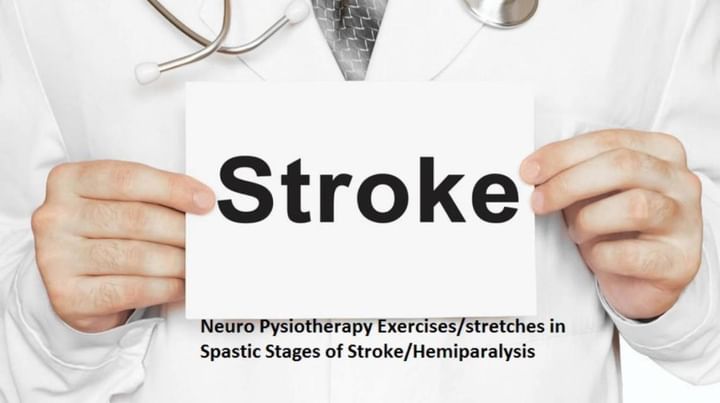Neuro Pysiotherapy Exercises/stretches in Spastic Stages of Stroke/hemiparalysis
TREATMENT IN SPASTIC STAGES:
In case of spasticity the therapist should try to achieve the following aims:·
First normalize the tone.
Development of normal functional pattern.
Prevention of contracture and deformity.
Train the patient to be functionally independent.
Achieve highest possible physical security for the patient.
Spasticity in the muscle can be reduced by the following methods:
Gentle rhythmic passive movement.
Sustained gradual stretching either manually or by using splints.Prolonged icing over the spastic muscle bulk for about 15 to 20 min.
Faradic stimulation to the weak antagonist muscles can reduce the
Spasticity of the agonist muscle by the principle of reciprocal inhibition.
Reflex inhibiting postures or patterns.
Biofeedback: This can be used to relax spastic muscle as well as to activate its antagonist.
EXERCISES IN SPASTIC STAGE:
EXERCISES IN LYING:
Scapular movement: The patient scapula should be mobilized passively and also the patient should be asked to perform protraction and elevation movement of the scapula.Touching the opposite shoulder: The patient is trained to take his arm from extension, abduction and external rotation position towards his opposite shoulder into flexion , adduction, supination and external rotation.Touching the head: The patient is trained to touch the head by maintaining external rotation and supination. The Therapist maintains the hand in extension of the fingers with the thumb in abducted position and then she moves the hand into abduction and elevation maintaining the elbow in extension. This exercise can be progressed to active the as the patient learns to control the movement.Elbow extension with shoulder in 90 degree of flexion.The patient is then trained to maintain the arm in space in different directions. This exercise will help the patient in developing good control of the upper limbs and also increase the proximal fixation.
Bridging:
Bridging should be done by weight bearing on the affected limb only. The therapist maintains the normal limb in flexion and encourages weight bearingt hrough the hemiplegic lower extremities.
Unilateral rotation of the pelvis:
The patient performs hip-knee flexion of the affected lower limb and then rotated the pelvis to the opposite side. The patient tries to maintain this posture so that the spasticity of the trunk is inhibited. This exercise also help in encouraging forward rotation of the pelvis and correcting pelvic retraction.The patient is encouraged to perform flexion adduction and extension abduction pattern of the lower limb keeping the knee in extension position throughout.
The affected lower limb is kept in abduction at the edge of the plinth such that the knee is in flexion. In this position the patient is encouraged to perform knee extension and flexion without any adduction or flexion movement at the hip.
The patient may be trained to perform dorsiflexion with hip extension and plantar flexion with hip flexion. In case the patient is unable to perform dorsiflexion he may be trained to do with hip-knee flexion and the flexion at the hip and knee gradually reduced.



+1.svg)
